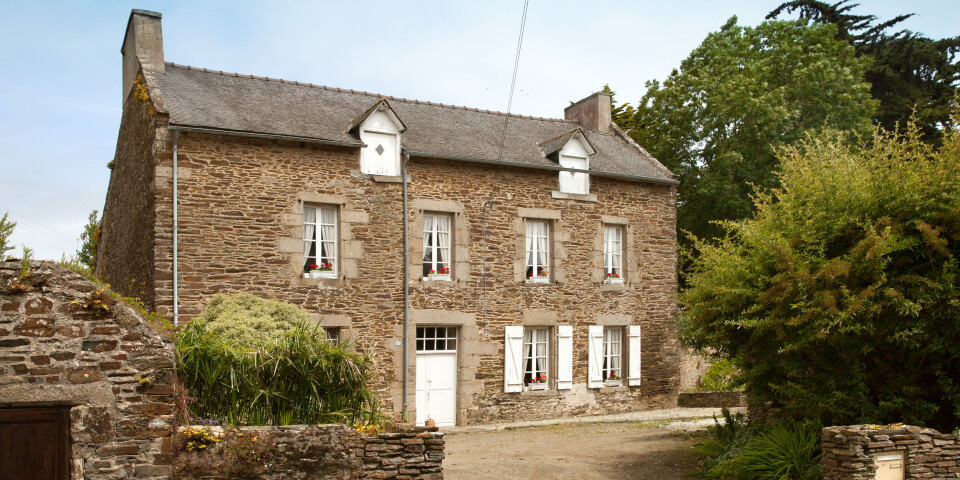-
What you need to know when collecting rainwater in France
The rules are complex and depend on what you plan to do with it
-
Can I install a small structure for work use on my land in France? - Partner article
'Garden shed tax' can be levied in certain circumstances
-
Duo create stunning garden on an expanded horticultural canvas in Lot-et-Garonne
Visit this colourful gem next year, where a passion for salvias meets sustainable gardening
Gardening in France: Permaculture tips
Cathy Thompson discusses the method of enabling the soil in your French garden to mobilise its own resources rather than adding nutrients yourself

This year we need our March daffodils more than ever, after what seems to have been a long, cold and particularly oppressive winter. I’ve long been a fan of teaming them with small-leaved ivies such as silver-variegated ‘Glacier’.
The foliage is pretty and lightens the dark winter days before the daffodils emerge – but the main bonus is that the bright flowers are protected by the foliage from mud splash when it rains.
In 2020, I noticed a special new ivy solution, one guaranteed not to climb into the arms of nearby shrubs and trees or scale house walls. This new variety is called ‘Bellecour’ after the quartier in Lyon where it was found and, although it is not variegated like ‘Glacier’, the large shiny leaves provide a pleasing finish to shrub borders.
I am trying it out this March under the shade of Prunus ‘Tai-Haku’, followed by a planting of Narcissus poeticus var recurvus (the Pheasant’s Eye narcissus) in September 2021.
Permaculture permutation
Permaculture has been whispering sweet nothings in my ear, promising less sweat and less time in vegetable production. But the thing that is really beckoning is its promise of a massive improvement in the crucial worm population.
This method is about enabling the soil to mobilise its own resources rather than the gardener adding nutrients. It demands the following from its adherents: 1) you should never dig; 2) you mulch all areas once or twice annually; 3) you leave the roots of annual plants in the ground – cut the growth of peas, beans and tomatoes just below ground level and twist the stems of lettuce and cabbage away.
It seems that in using a permaculture approach vegetable productivity may be lowered by about 8%, but the benefits in saved time and improved soil health seem to outweigh that small loss. There’s also a great contribution to weed suppression – every time we dig we expose a fresh treasure trove of weed seedlings to suitable germination conditions.
Although a permaculture plot is often cultivated on mounds or raised lasagne beds, I am trying it out on the flat in previously dug beds. I started by laying down layers of fresh organic matter in September 2020: old sweet corn stalks, cabbage, courgette and pumpkin foliage.
Not only do I save space in my compost bins, but I am also applying the mulch at a time when the soil fauna and flora is hungry for organic matter and the soil needs to be protected from winter rain.
This month and next I’ll be planting out young transplants directly into the mulched ground and following up with a protective, moisture conserving mulch from my compost bins.
If you find you need to relieve compaction of the soil in spring after winter rains, do not turn the soil over and threaten your worm population; instead use one of the increasingly available fourches écologiques, which come with long handles to manipulate the (mostly) four or six prongs that are inserted into the ground to agitate and ‘lift’ the soil, rather than turn it.
Another feature of permaculture is its reliance on perennial plantings. Of course, many of us already grow luscious perennial crops like artichokes and asparagus, but there are many others to try, most of which have been cultivated since the Middle Ages and are the ancestors of our modern vegetables.
I don’t think I’ll ever be letting go of my lettuces, peas and French beans (never mind the tomatoes, chilli peppers, aubergines and sweet peppers of summer), but there are more than a few worth investigating.You could try:
- Arroche/Chénopode bon Henri (wild spinach, Chenopodium bonus-henricus). The arrow-shaped leaves are sweet in spring and cooked like spinach, but become increasingly bitter as the season progresses. You can also use the flower heads in a stir-fry.
- Poirée verte à couper ‘Erbette’ (perpetual spinach, Beta vulgaris subsp. vulgaris var. cicla). An Italian heritage variety; really a kind of chard, but with a sweeter flavour, more like spinach. Very drought-resistant, but biennial rather than a true perennial.
- Chou perpétuel de Daubenton (Brassica oleracea var. ramosa) A cabbage ancestor – but think leafy greens, with a flavour of broccoli. Pick the leaves as required: for regular harvesting you will need quite a few plants.
- Poireau perpétuel (Allium ampeloprasum) These perpetual leeks are smaller than annual leeks and can be harvested January to December. To get a blanched base to the leaves you have to earth up the bases once or twice in a season.
- Haricot patate (Potato bean, Apios Americana). This is new to me – but not to native North Americans! It sounds like a good potato substitute. A member of the pea family, it needs a support for its 2m stems; the tubers are harvested in winter. Although the top growth is killed off by frost, in colder areas of France the tubers should persist under mulch in winter.
These vegetables can be acquired as seeds or young plants at Graines Baumaux, Ferme de Sainte Marthe, or La Semence Bio where you will find other perennial vegetable suggestions.
If you are interested in organic seeds, it is also well worth looking at the exciting range of Kokopelli Seeds, a company set up in 1999 to preserve the biodiversity of edible vegetables and medicinal plants. All of their seeds come from a network of organic growers and they are particularly committed to varieties whose seed may be saved from year to year by individual gardeners – unlike F1 varieties, which will not ‘come true’ from seed.
























